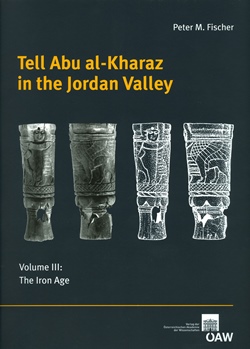Peter M. Fischer
is Professor of Cypriote and Near Eastern Archaeology at Göteborg University
|
 |
Tell Abu al-Kharaz, ein Siedlungshügel im mittleren Jordantal, östlich des Jordans, wurde zwischen 1989 und 2012 unter der Leitung des Autors erforscht. Die Stadt erlebte ihre Blütezeit in der Frühbronzezeit und – nach einer längeren Besiedlungslücke – in der späten Mittelbronze- und der Spätbronzezeit. Als letzter Band in einer Serie von drei Bänden über Tell Abu al-Kharaz (Band I: Frühbronzezeit, 2008; Band II: Mittel- und Spätbronzezeit, 2006) ist das vorliegende Buch der erste abgeschlossene Bericht über eine eisenzeitliche Siedlung im Jordantal. Ausgrabungs- und Bearbeitungsmethoden werden in Kapitel 1 beschrieben. Kapitel 2 präsentiert die Stratigraphie, die gemeinsam mit der Architektur, der Keramik und den Kleinfunden behandelt wird. In Kapitel 3 werden die Typologie und Chronologie der keramischen Funde, einschließlich der zahlreichen Importe, beschrieben und sowohl typologisch als auch chronologisch klassifiziert. Kapitel 4 ist der Auswertung der 42 Radiokarbondaten gewidmet. Kapitel 5 schließlich beinhaltet eine Zusammenfassung der Resultate: Klima, Umwelt, Fauna und Flora, Art der Besiedlung, Anzahl der Einwohner und die mögliche Verwaltung der Stadt, Wirtschaft und Handel sowie die Handelswege. Die Architektur der sieben Siedlungen der Eisenzeit und die Keramik werden weiterhin diskutiert. Funde, die auf Kontakte mit den Philistern/Seevölkern schließen lassen, werden behandelt. Spezielle Aufmerksamkeit wird der relativen und absoluten Chronologie der Besiedlungsphasen mit Hilfe von Radiokarbon und dem Vergleich mit geeigneten Grabungsstätten gewidmet. In vier Appendices werden die Figurinen, ein außergewöhnlicher Handgriff aus geschnitztem Knochen, Schminkpaletten aus Stein und Alabaster sowie das glyptische Material und die Ostraka diskutiert.
Gedruckt mit Unterstützung des Fonds zur Förderung der wissenschaftlichen Forschung (FWF).

|





 Home
Home
 Print
Print
 References
References
 Share
Share